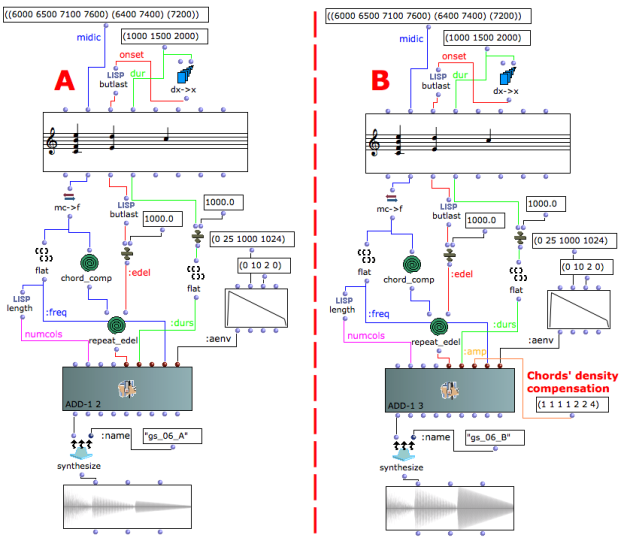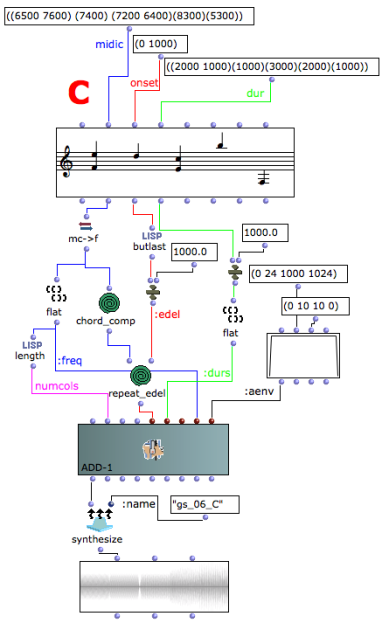Chord-seq to OMChroma
Tutorial Getting Started 06 - Chord-seq to OMChroma
Passing data from Chord-seq to an OMChroma synthesis class (as add-1).
Data Conversion
The chord-seq's data must be converted in order to be used with Csound.
The conversions requested are the following:
- midicent to frequency using the mc->f function
- time from milliseconds to seconds dividing by 1000 onsets and durations (or using the ms->sec function)
- velocity to amplitude (for more details see Tutorial 01_08 Velocity versus Amplitude).
In the example A observe in the sound object the amplitude of the chords rendered by add-1.
The first chord has 4 notes and an amplitude of 0 dB.
The second chord has 2 notes and an amplitude of about 1/2 of the first one.
The third chord has only 1 note and an amplitude of about 1/4 of the first one.
Although it is difficult to exactly compute the amount (as it depends on the frequency and phase of each note), the amplitude of 4 simultaneous notes is higher than that of 2 notes, and therefore a sort of amplitude compensation might be needed.
In the example B the list of amplitudes (1 1 1 1 2 2 4) balances the density of the chords.
The way to balance amplitudes shown above does not refer to loudness (perceptual amplitude), but only to the signal's highest value. Compensating loudnesses of complex signals is a very tricky process, which will not be explained in this documentation.
- OMChroma User Manual
- System Configuration and Installation
- Getting started
- Class Input Slots
- Slots' Description and Default Values
- Amplitude and Internal Editor
- Amplitude Envelope
- f-GEN Reserved Numbers
- Audio Waveforms
- Chord-seq to OMChroma
- Spectrum Chord and Arpeggio
- Velocity versus Amplitude
- Exponential Amplitude Envelope with a BPF
- Relationship with the Csound .orc and .sco files
- Slots polymorphism
- Managing GEN function and sound files
- Predefined Classes
- User-fun
- Creating a new Class
- Multichannel processing
- Appendix A - Common Red Patches


